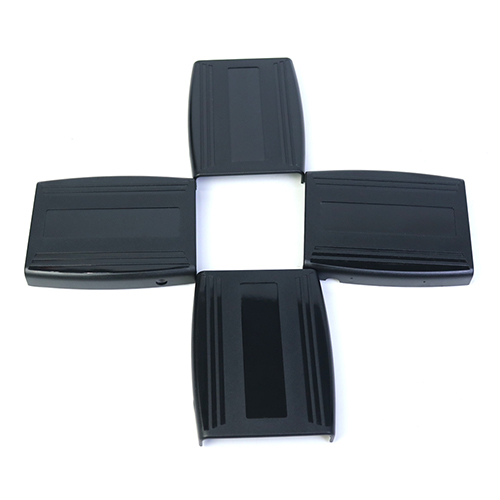April 9, 2025 – The demand for CNC routers is skyrocketing as manufacturers look to upgrade their operations with cutting-edge, high-efficiency technology. Whether it’s in woodworking, metalworking, signage, or prototyping, CNC routers are rapidly becoming the go-to tool for businesses seeking precision, speed, and flexibility in production. As we move further into 2025, the CNC router has emerged as one of the hottest selling machines on the market, revolutionizing industries across the globe.
Why CNC Routers Are Dominating the Market
In the world of modern manufacturing, speed, precision, and cost efficiency are crucial. CNC routers are at the forefront of meeting these needs, delivering exceptional results while reducing manual labor. By automating the cutting and shaping process, these machines are enabling manufacturers to increase productivity while maintaining high-quality standards.
Key Reasons Why CNC Routers Are So Hot in 2025
1. Precision and Consistency Like Never Before
One of the primary reasons CNC routers are taking over is their precision. Unlike traditional manual cutting methods, CNC routers are driven by computer programs that execute cuts with incredible accuracy. This consistency ensures every piece is identical, which is essential for industries like furniture making, custom cabinetry, signage, and aerospace.
“With a CNC router, we can achieve millimeter-level precision with every cut,” says Michael Lewis, founder of Custom Wood Designs. “This level of accuracy used to be impossible without a highly skilled craftsman, but now it’s standard with CNC routers.”
2. Versatility Across Multiple Materials
From wood and plastic to metal and composites, CNC routers can handle a wide array of materials. This versatility makes them indispensable for manufacturers in a variety of sectors, including furniture, automotive, electronics, and more. Whether you’re cutting thick wood boards, delicate acrylic sheets, or lightweight metals, a CNC router delivers precise cuts every time.
Businesses are no longer limited to working with just one material. With a CNC router, manufacturers can expand their offerings and enter new markets, making it an investment that pays for itself over time.
3. Increased Productivity and Faster Turnaround Times
In today’s fast-paced world, being able to produce products quickly is essential to staying competitive. CNC routers drastically reduce production time by automating complex cutting and shaping processes. This means your business can produce more products in less time, improving throughput and meeting customer demands faster.
“Since we adopted CNC routers, our lead times have been cut in half,” says Jessica Miller, Operations Manager at Precision Signage Co. “This has allowed us to take on more projects and deliver them quicker, giving us a major edge over competitors.”
4. Customization Capabilities for Competitive Advantage
As consumer preferences continue to lean towards personalized, one-of-a-kind products, CNC routers are playing a pivotal role in meeting this demand. Whether it’s custom furniture, personalized signage, or unique promotional materials, these routers allow manufacturers to produce bespoke designs efficiently and cost-effectively.
“One of the biggest trends we’re seeing is a shift toward personalized products,” says Ryan Adams, CEO of Artisanal Creations. “With CNC routers, we can offer our clients highly customized designs that are tailored to their exact specifications. This customization is what sets us apart in a crowded market.”
5. Reduced Labor Costs and Minimization of Errors
Manual cutting and shaping processes often require highly skilled labor and are prone to human error. CNC routers, on the other hand, reduce the need for manual input, allowing businesses to cut labor costs and minimize errors. Operators only need to input the design, and the CNC router takes care of the rest, operating continuously with minimal supervision.
The result? More efficient use of labor, fewer defects, and a reduction in costly rework. For businesses looking to streamline operations, CNC routers are a cost-effective solution that boosts productivity and profitability.
The Global Growth of CNC Routers: What Does This Mean for the Industry?
The global adoption of CNC routers is creating a ripple effect across industries. Companies of all sizes—from small startups to large multinational corporations—are recognizing the potential of this technology to improve their manufacturing processes. The rise of CNC routers is also contributing to the increasing trend of digitalization in manufacturing, leading to smarter, more flexible production environments.
What’s Next for CNC Routers?
As technology advances, so too does the CNC router. The next wave of CNC routers will feature even more sophisticated capabilities, such as enhanced AI-driven programming, real-time adjustments, and greater connectivity through the Industrial Internet of Things (IIoT). These advancements will allow CNC routers to become even more efficient, adaptable, and user-friendly.
Conclusion: Why You Should Invest in a CNC Router Today
The rise of the CNC router is not just a trend—it’s a shift in how manufacturing is done. With precision, speed, versatility, and cost-saving benefits, CNC routers are poised to become the backbone of modern manufacturing operations. Whether you’re in woodworking, metalworking, signage production, or prototyping, a CNC router is an investment that can transform your business.
Don’t miss out on the opportunity to stay ahead of the competition. The future of manufacturing is digital, and CNC routers are leading the charge. Now is the time to embrace this technology and take your production capabilities to the next level.
Post time: May-08-2025





